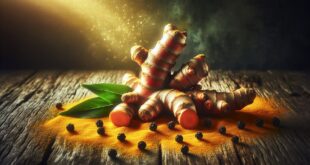 Herbal applications in Templar rituals often centered around both symbolic and pragmatic purposes, ensuring the Knights Templar were prepared for the challenges they faced. Imagine a setting where the air hums with a quiet reverence, as each herb is not just a plant, but a sacred ally in their quest for resilience and clarity. Among the commonly used herbs, rosemary held a special place; its branches often adorned ceremonial spaces, its scent invigorating the spirit and clearing the mind.
Herbal applications in Templar rituals often centered around both symbolic and pragmatic purposes, ensuring the Knights Templar were prepared for the challenges they faced. Imagine a setting where the air hums with a quiet reverence, as each herb is not just a plant, but a sacred ally in their quest for resilience and clarity. Among the commonly used herbs, rosemary held a special place; its branches often adorned ceremonial spaces, its scent invigorating the spirit and clearing the mind.
It wasn’t just about ritualistic importance; these herbs served real, tactical purposes. Consider lavender, not just pleasant in fragrance but a cornerstone in Templar medicine. This versatile plant was utilized to calm the mind—aiding meditation or providing restful sleep after long vigils. It’s no surprise many of the Templars believed these “medieval remedies” were gifts from the divine.
Moving through the rituals, you’d notice the use of sage—a plant renowned for its cleansing properties. It’s a sort of ancient guardian against negativity, used to clear both spaces and minds. How often do we forget the simple power of smell and touch in today’s fast-paced hustle? The Templars, though warriors, understood that real strength—or “herbal strength,” if you will—came not just from the blade, but from a balance of body, spirit, and nature.
Could it be that we’ve lost some of this ancient wisdom in our modern lives? It’s a question worth pondering as we reconnect with nature’s pharmacy, much like the Templars did. Their rituals remind us that every plant has a story, a purpose, a whisper of something larger than itself. For those living a conscious life, reclaiming this knowledge is more than nostalgia; it’s about merging practicality with a deeper understanding of interconnectedness.
From the ceremonial to the medicinal, herbs were a testament to the Templars’ holistic approach. They were the living bridge between earthly battles and spiritual quests—a gentle reminder of the rhythm of life itself.
medicinal benefits of herbs to the knights
In the medical practices of the Knights Templar, herbs played an essential role for both recovery and resilience. Their knowledge of plants, often considered the pinnacle of “medieval remedies,” reflects a harmonious blend of necessity and natural wisdom. Picture the scene: a weary knight returns from battle, armor dented, spirit weary. In their arsenal, more potent than the sharpest sword, were ointments and potions brewed from simple, robust ingredients—the very gifts of the earth.
Take rosemary, for instance, celebrated for its ability to boost memory and concentration. This wasn’t merely an old wives’ tale but a cornerstone of Templar medicine. They valued its invigorating properties, often using it to treat fatigue and stimulate the senses. When a knight sat in deep contemplation or strategized for imminent battles, a brew of rosemary tea might accompany him, sharpening his wits like an unseen armor.
And then there’s the mighty peppermint—a real workhorse in their herbal kit. Known to alleviate pain and digestive issues, peppermint was administered in various forms, from soothing teas to direct application of mint leaves on the skin. Imagining its cooling effect on a feverish knight’s forehead transports us to a realm where nature offered respite in the midst of relentless warfare.
Interestingly, thyme was also a trusted ally, widely utilized for its antiseptic qualities. It protected against infections, a crucial need in the gritty life of a Templar knight. It was more than just an herb; it was a guardian of well-being. In a world where antibiotics were centuries away, thyme stood as one of nature’s earliest defenders against the unseen enemies of the body.
Focusing on “herbal strength,” the Templars mastered the art of crafting herbal salves and poultices. These concoctions healed wounds, soothed sprains, and tended to sore muscles—a testament to their skilled hands and intuitive approach. A battered soldier would find comfort in the earthy, medicinal aroma of these preparations, a sensory experience as much psychological as it was physical.
“Knowledge is the key to survival,” so said the celebrated Sun Tzu. For the Templars, this knowledge was tattooed in their willingness to harness the healing power of plants—a practice steeped in both science and sanctity. What can we glean from their dusty scrolls and herbal brews? Perhaps it’s a gentle nudge, reminding us of nature’s ceaseless generosity—an invitation to delve back into its bountiful pharmacy.
In rediscovering this practice, one doesn’t need to don a cowl or crusader’s cross; just a mindful step towards incorporating nature’s gifts into everyday life. Whether through simple teas or elaborate tinctures, the medicinal benefits the Knights Templar cherished continue to offer wisdom—waiting silently amidst fields and gardens, breathing life into our shared human story.
For those interested, additional details on natural living and self-reliance can be found in resources like the NCBI or insights into historical practices at U.S. Department of Energy.
cultivating and preserving ancient herbal knowledge
 Imagine a quaint herb garden nestled within the stone walls of a Templar sanctuary. It’s an alive archive, really. Each plant, from the venerable rosemary to the humble thyme, tells stories passed down like whispered secrets from nature itself. Cultivating such knowledge was akin to safeguarding a treasure more precious than gold. But how did they manage to keep this knowledge alive and thriving?
Imagine a quaint herb garden nestled within the stone walls of a Templar sanctuary. It’s an alive archive, really. Each plant, from the venerable rosemary to the humble thyme, tells stories passed down like whispered secrets from nature itself. Cultivating such knowledge was akin to safeguarding a treasure more precious than gold. But how did they manage to keep this knowledge alive and thriving?
First off, we must understand that the Templars valued this herbal knowledge as a cornerstone of their existence—a tool for survival and enlightenment. The monks entrusted with preserving and expanding this wisdom worked meticulously, like artists painting a living canvas. Their practices were their teachers, their failures lessons engraved in the annals of time.
The transmission of knowledge wasn’t just a matter of scribbled notes on parchment. Think of it more as a communal undertaking, involving the sharing of insights around flickering candles at dusk. One could imagine apprentices—eyes wide with curiosity—watching experienced hands prepare tinctures, their minds gathering fragments of wisdom like bees collecting nectar.
Here’s the thing: they had a remarkable knack for pairing scientific precision with spiritual insight. They saw herbs not only as physical remedies but as spiritual companions—partners in the dance between life and healing. Such perspective wasn’t just practical; it was soulfully sincere.
As for preservation, the Templars’ methods were both timeless and meticulous. Drying herbs in shaded cloisters, preserving them in oils and vinegars, creating salves that could last even through arduous crusades—these techniques were carefully honed practices. Whether it was sachets hung from rafters to purify the air or infusions stored in earthen jugs, their approach to “herbal strength” was holistic and innovative.
“The beginning of knowledge is the discovery of something we do not understand,” said Frank Herbert. This resonates with the Templars’ ongoing journey with herbs—not just a means to an end but a path of endless discovery.
In this era, where the digital age gathers speed and forgets the earthy origins of wisdom, revisiting Templar practices isn’t merely nostalgic. It’s about rooting ourselves in traditions that speak of reverence and continuity. So, what does this mean for us? Perhaps it’s time we slow down and become apprentices again—learning from the melodies of leaves, the wisdom in petals.
If you’re keen to explore more about reviving ancient practices, valuable insights can be found at NCBI or discover how history shapes our present at the U.S. Department of Energy. These resources can guide you in crafting a life using nature’s time-tested wisdom, connecting the threads of past and present. Such is the cycle of learning: nurturing knowledge as though it were a thriving garden—always growing, always giving.
 DS Haven In Light Of Things
DS Haven In Light Of Things






